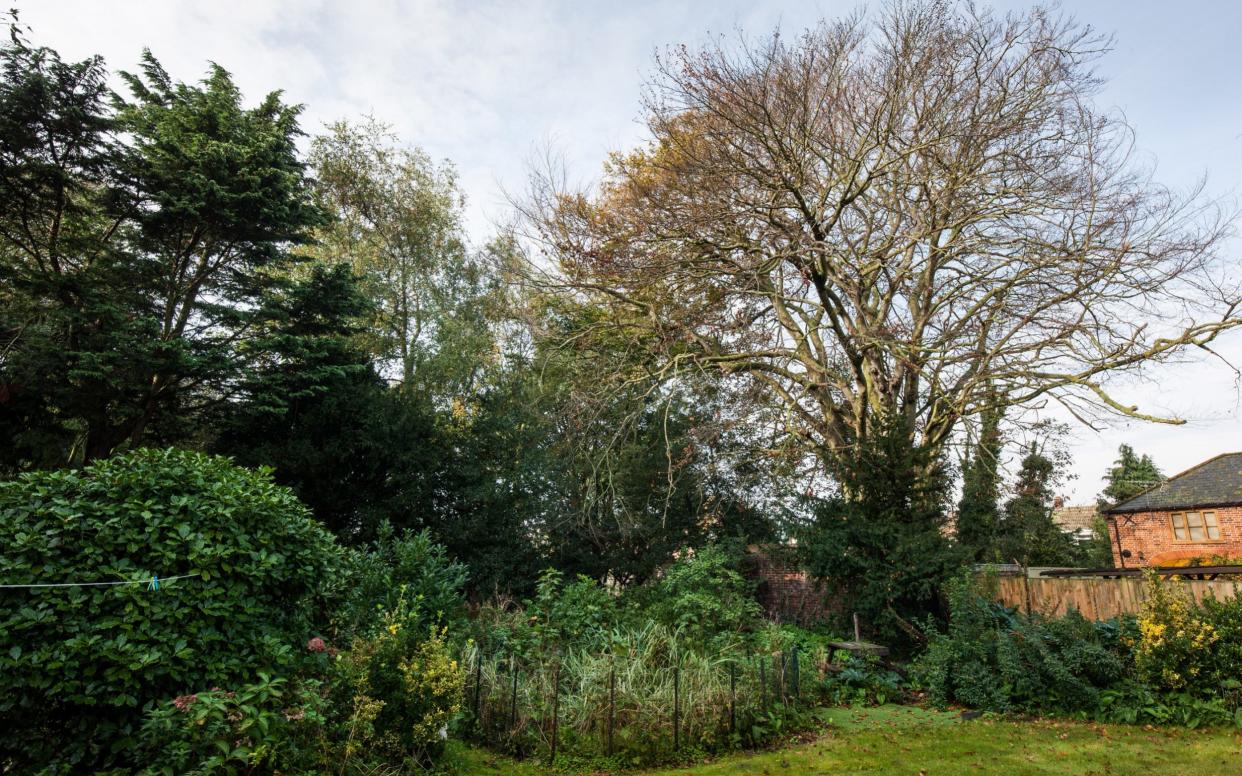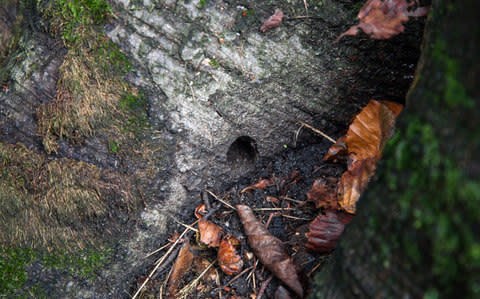Mystery of seaside town poisoning that has had police barking up the wrong tree

Like all the best murder mysteries, the killer strikes at the dead of night to ensure he is neither seen nor heard as he administers poison to his unsuspecting victims.
Each bears the same tell-tale scars from the brutal attack - puncture holes where the chemical has been carefully injected.
By the time the drug has taken effect the assassin has vanished leaving the police clueless. More importantly, they are baffled about the motives because the victims have all been historic towering and protected trees in a private Norfolk woodland.
In total, eight trees in Gorleston-on-Sea have been targeted by the culprit who drills holes in either the roots, trunk or boughs before a mystery chemical is poured in and the scar covered up.
So far, one holly tree has died, but seven beech, horse chestnut, holm oaks and poplar trees with preservation orders on them have been diagnosed as “distressed” having lost most of their leaves that created once vast canopies. The oldest is nearly 200 years old.

Tree surgeons from Great Yarmouth Borough Council now have obtained leaf and wood samples that are currently being analysed in a lab in the hope of offering both a clue and a cure.
The majority of the trees are in the grounds of Koolunga House, an imposing home with bow windows and a copper dome built for a naval officer called John Garnham in 1826.
The management company of the property, now divided into seven flats, is offering a £700 reward to anyone with information that leads to the perpetrator’s conviction for criminal damage.
Rob Smith, who owns and lets four flats and looks after the once verdant woodland, was contacted last year by the council warning that some trees with preservation orders on them appeared “distressed”.
“We got a tree surgeon who said it was weeping sap about 2ft up the trunk,” he said. “He found a loose piece of bark and a drilled hole. It was a real surprise. I contacted the police to alert them of what is criminal damage.
“Then we started looking at other trees. We found a total of about 30 holes drilled in eight trees.”
Michael Boon, 75, whose home backs onto the woodland, is convinced the culprit must have trespassed on private property to get to his beech tree.
“I have a beautiful beech tree in my garden which is about 50ft tall and is one of the oldest in Gorleston,” he said.
“I was more than annoyed that some evildoer deliberately poisoned it. Someone must have gone through my neighbour’s property, then on to my shed roof to be able to drill four holes up into a 10ft high bough. It’s malicious behaviour.
“I want them to throw the book at the perpetrator when they get him.”

Council leader Graham Plant believes the culprit may have used a hand drill to avoid any noise and may be returning to add more poison to speed up their decline.
“Why would someone want to damage something as beautiful as these gardens. I’ve contacted the police who say it constitutes criminal damage,” he said.
The council has written to 29 householders outlining the law regarding tree preservation orders as well as appealing for help to catch the criminal. The letter explains how it is a criminal offence to damage, top or lop such a protected tree. It could even result in a £20,000 fine.
“These trees are irreplaceable because they had beautiful green canopies for hundreds of years,” Mr Smith continued. “They’re now very badly damaged.”
Trees may be secretly poisoned for a variety of reasons. A homeowner may want to kill a tree to open a view they want, get more light, prevent leaves falling on their lawn, resolve a border dispute or stop roots spreading. However, it is also possible either an individual or a company would want to kill off protected trees on land they want to develop houses on.
Pauline Buchanan Black, director general of The Tree Council, said: “This is a very serious matter. These are acts of pure vandalism by people acting selfishly for immediate personal gain. But, the whole community suffers. What they don’t realise is that these trees were there well before they were. Sadly, this kind of thing is reported to us with alarming regularity.”
Although Norfolk Police first received reports about the holes being drilled in trees in Gorleston nearly a year ago, the case was closed because there were no further lines of enquiry. A force spokeswoman said that if it received new lines of enquiry they would open the case.
Mr Smith hopes his offer of a reward will lead to the clues they need to solves this mystery.
Additional reporting: Nick Stewart

 Yahoo News
Yahoo News 
